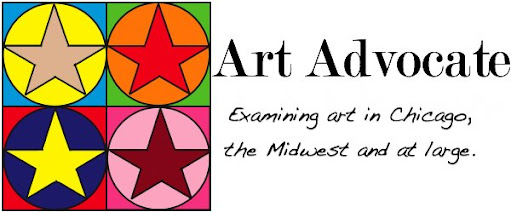I think one of the biggest issues facing specifically art museums over the next decade will be the issue of moving from paid admission to free or pay-what-you-feel donations. As Jacob Stockinger and I have written, we both believe that Madison is at the forefront of this issue with both the Chazen and the Madison Museum of Contemporary Art being free.
The New York Times released its special section on museums today, which acknowledges that art exists beyond New York City. There are a number of interesting articles but I would like to focus on one comment in particular from the Times, initially singled out by Tyler Green in his Modern Art Notes blog:
At the Museum of Modern Art [referred to as MOMA hereon], Glenn D. Lowry, the director, said that it was just as important to know who is not coming to the museum as it is to know who is.
"It's what you're missing," he said. While entry information and other data showed that a healthy number of college students visited the Modern, "we were not drawing as many of the 20- to 30-years-olds that we hoped," Mr. Lowry said. "So we went out to determine how to better communicate with them."
Green offers advice to the director and really most NYC museums:
"I'm happy to tell MoMA why it isn't drawing as many visitors in their 20s as they'd like: Because MoMA charges $20 for admission. When you set an admissions fee that high, one of the visitor groups you're almost certainly going to impact is young people.
For years I've argued that by charging $20 for entry, museums are cannibalizing their future audiences. According to Vogel's story, MoMA has discovered that process may be underway."
As a 20-30-year-old who recently visited the New York museums (Guggenheim, MOMA, the Met) I can confirm that admission prices are way too high for my demographic. It becomes a major financial burden to visit these institutions, deterring many and taking the focus from self-improvement or anything like that, to the pocket book. For instance, should I have to pay the whole admission price to the Guggenheim when it's under construction, it's between major exhibits and the collection is not installed in the circular rotunda (my main reason to go, to see the art on the famous slanted ramp) and the secondary exhibits include a whole show of New York grade schooler's art?
Britain implemented free admission to its national museums in 2001 and reported a rise in visitors of more than 60%, whereas Sweden ended free admission at its national museum and saw attendance drop by 20% (Article in New York Times). The same Times article focuses on the French national museums which are experimenting with free admission (for certain groups) for six months.
Unfortunately current thought in the museum world regarding admission prices is almost polar opposite to the trend in Europe is and admission setting is encouraged strongly by the industry wide association, the American Association of Museums (AAM). According to their November/December issue of Museum News, Shannon Oster writes enthusiastically about charging admission in her article "Charge Now-Here's How":
I would argue that charging a price to visit a museum may not only attract more devoted patrons but actually induce other patrons to take the visit more seriously to psychologically justify the admission price.
As evidence of this theory Ostner oddly cites a study done on Zambian villagers using a water purifying tablet less when it was free and more when they paid a "very modest fee." Couched in business-speak Ostner relies heavily on predicting the psychology of the patron, concluding that when $20 is on the line the visitor will want to get their money's worth. Ostner essentially says that people who can't easily afford museum admissions will go on alternate days when the institution is free (assuming both availability of the visitor and the existence of free admission times (thanks Target Companies and Chase Manhatten!)). Ostner doesn't address the possibility that the visitor just doesn't go at all.
Well according to the director of the MOMA the facts are in and charging an admission, especially one of $20, does deter visitors from the museum. According to Sweden charging admission reduces audience significantly and conversely according to Britain and France eliminating admission results in startling gains.
People want to enrich their lives through museums, admission fees do not create a motivation for learning only an obstacle to attendance.
I'm sure I will be writing more on this in the future.



